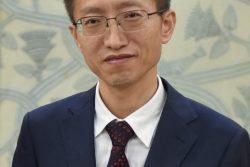China’s response to the precipitous fall of its stocks betrays not only a profound ambivalence towards free markets, but also a certain measure of scepticism towards the liberal ideals that ought to underpin them. The current crisis can hardly have come as a surprise. Two months ago the average price-to-earnings ratio for China’s stocks hovered around 70 to 1 (compared to the global average of less than 20); Shenzen’s ChiNext index listed companies with ratios around 150 to 1 – a level of irrational exuberance not seen since the dotcom bubble at the end of the 1990s. Only the most naive investor, or ideologue, could have failed to see what was likely to follow. Yet, when the bubble popped, instead of allowing the correction to run its course, regulators panicked. After watching US$3.5-trillion vanish in short order – an amount greater than the total value of all of India’s listed companies – the government has essentially assumed stewardship of a pricing mechanism that cannot work properly unless it remains independent.
Paradoxically, much of the response was driven by the government’s sensitivity to the mood of local investors. As in other countries undergoing transitions to state-driven capitalism, China’s leaders have a wary eye on the court of public opinion, since further economic growth increasingly requires the confidence and support of the country’s burgeoning middle class. Nearly one in ten Chinese households have invested in the country’s surging stocks, many with the hopes of realizing an American-style “Chinese dream” – a catchphrase of of Xi Jinping’s presidency.
Previous crises have been handled with relative dispatch. For instance the fallout from a recent housing bubble was largely offset by higher interest rates and limits on the number of residential properties an individual could own in major cities. Consequently, when the stock market entered bubble territory – this spring the collective market capitalization of the Shanghai and Shenzhen exchanges’ 2,500 listed companies exceeded US$9.5 trillion – many investors believed the government would protect them from similar downturns. China’s middle class, already nearly 160 million strong – second, in absolute terms, only to the United States – is likely to comprise 70 per cent of the country by 2030, and to spend US$10 trillion on goods and services. The government knows that it cannot lose the confidence of such an important constituency. Yet although the CCP has grown the economy at an enviable rate for most of the last two decades, it has always done so with an anxious authoritarianism, fearful of the political confusion that could result from capitalism’s vicissitudes.
Lamenting the decline of “democratic constitutionalism” in the New York Review of Books last year, Michael Ignatieff presciently warned that the seemingly unstoppable rise of authoritarian capitalist states like Russia and China could halt when faced with a long-term economic crisis, or forced to grapple with the volatility of free markets. Modernization in both countries has aped capitalism but it has nevertheless remained profoundly illiberal: “The new authoritarians offer the elites of Africa and Eurasia an alternate route to modern development: growth without democracy and progress without freedom.” Ignatieff warned that “the authoritarian archipelago is arrogant but it is brittle: it must control everything, or soon it controls nothing. The saving grace of democracy is its adaptability. It depends for its vitality on discontent … free societies can discard failed alternatives.”
While China has managed to steer its economy past recent financial crises that hobbled many Western states, it has done little to the liberal freedoms that help the West recover from its mistakes. The lack of these freedoms has made governance less demanding in the Peoples’ Republic, but it has eroded the government’s ability to adapt to crises, and deepened its authoritarian mindset. Unnerving though it was, the stock markets’ sudden fall was far from catastrophic. China’s stocks amount to roughly a third of its GDP (compared to more than 100 per cent in many rich countries) and just 15 per cent of household assets. Furthermore, most of the funding for the US$320 billion of margin debt on the exchanges was privately funded and the
lost value threatened less than two per cent of total bank assets. In other words, the crisis did not herald a disaster. Even so, the government’s try-everything approach – which included a moratorium on public offerings, restrictions on stock sales by state owned enterprises (SOEs), company directors or large shareholders; lower trading fees, and fewer regulations on margin trading – has shown that China’s leaders are less capable of making this distinction than they were thought to be, and they will likely struggle to regain investors’ confidence long after the crisis has passed.








